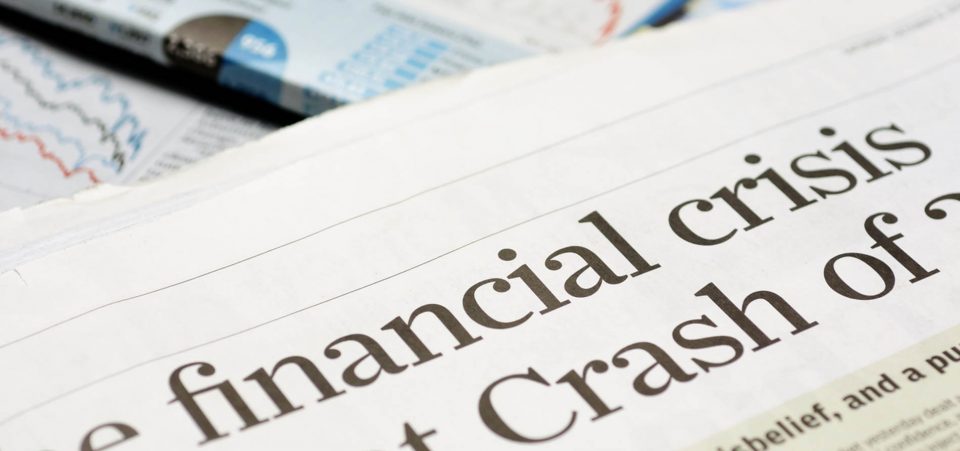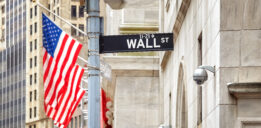Trump’s Tariffs Are a Sure Way to Repeat the Conditions of the 1929 Stock Market Crash
We’re entering storm season in the Caribbean and the southeastern United States. But that’s not the only storm making its way to the East Coast. A financial storm is brewing, potentially leading to what could be a repeat of the 1929 stock market crash.
Even though the Dow Jones index continues to hover around its record high, cracks are starting to show.
The issue Americans are ignoring is trade. More specifically, the issue is trade tariffs.
The problem may have something to do with the fact that schools don’t teach the Great Depression very well.
They focus more on the depression and less on the causes of the stock market crash that triggered that long phase of economic turmoil.
While reviewing 10 of those causes in a previous article, one struck me in particular. The 1929 stock market crash occurred after a phase of “irrational exuberance.”
The years and months that preceded it represented one of the longest bull markets in history.
Coincidentally, the only continuously bullish phase that is longer happens to be the present bull market that started in 2009. In fact, it holds the record as the longest bull market ever.
If the endurance of investors’ faith is one coincidence, there’s a second that should have already rung the alarm bells by now.
The second eerie coincidence between stock valuations in September 1929 and September 2018 is that, as both were at peak bullish levels, investors seemed oblivious to trade tariffs.
And the tariffs are hanging over investors’ heads like the sword of Damocles.
The Smoot-Hawley Tariff Act and the Great Depression
Indeed, as President Donald Trump has already fired the first shots of a global trade war, the markets have forgotten that the last such “conflict” occurred in the 1930s.
More than the October 1929 Stock Market Crash, it was the unleashing of the Smoot-Hawley Tariff Act in 1930 that turned that financial disaster, which affected investors, into an economic one, which affected everyone.
Trump has launched his tariffs before a stock market crash. But the logic behind them is remarkably like the Smoot-Hawley tariffs (at the time, the strongest trade duties adopted by the U.S. since 1828), which President Herbert Hoover signed into law on June 17, 1930.
President George W. Bush tried to use tariffs to prop up American steel manufacturers in 2002. But he had to abandon the idea.
The European Union, still reveling in the honeymoon of the euro, acted in unity and launched a series of countermeasures against American goods, which raised the price of some items by ridiculous amounts. (Source: “Why steel tariffs failed when Bush was president,” Politico, March 8, 2018.)
Thus, Bush had to let go of the steel tariffs plan by the end of 2003.
Nevertheless, the trade war of 1930 was not resolved so easily.
It was severe and, like the present one, which Trump is promoting, it too had a protagonist: Republican Senator Reed Smoot, President of the Senate Finance Committee. It would be fair to describe him, in trade terms at least, as the Trump of his day.
The Best Intentions Don’t Always Produce the Best Results
Not incorrectly, Smoot wanted to protect American jobs—and all the more so in the wake of the 1929 crash.
But he was mistaken in assuming that employment shortages were the fault of foreign countries wanting to export products to the United States, damaging the interests of American workers.
If that sounds like Trump, the fact that Smoot blamed the 1929 stock market crash on a trade deficit—more imports than exports—should ring all kinds of alarm bells.
Like Trump, Smoot thought that all the American economy needed to stimulate domestic employment was a good dose of protectionism and tariffs on as many products as possible—as many as 20,000 items were slapped with duties in 1930.
Like Trump, Smoot managed to persuade a good majority of Congress members and voters that the tariffs would be the one-solution fix-all “Band-Aid,” which would restore America’s financial and economic health in the wake of the 1929 stock market crash.
Also as with Trump—or better, the debate that has emerged over Trump’s protectionism—many economists appealed to President Hoover, urging him not to sign the Smoot-Hawley Act. (Source: “The Battle of Smoot-Hawley,” The Economist, December 18, 2008.)
Trade Is a Two-Way Street with Two-Way Consequences
Trade regulations have global effects.
Not surprisingly, then, they produce global reactions.
As tariffs rose overnight in June 1930, in some cases by four times, the world did not hesitate.
Even before such things as the European Union and a mighty industrial China holding billions worth of U.S. Treasuries, a global trade war erupted.
The world—and wouldn’t you know it, the main members involved were Canada, the British Empire, France, Germany, Japan, and Italy—hit back with tariffs of their own.
The United States cut imports by some 65% in that early experiment with “America First.” But, exports suffered by an almost equal amount. And did Smoot-Hawley achieve its stated goal of boosting unemployment?
That would be a flat no. The Great Depression may not have started with trade barriers. Yet trade barriers ensured that just about all American workers would suffer, putting the “Great” in “Great Depression.”
Tariffs Can Have Surprising Geo-Political Effects
In August 1930, Italy, one of the countries most affected by American tariffs, signed a trade agreement with the Soviet Union—following it up with a non-aggression treaty.
While history does not repeat itself, it rhymes. And Trump would do well to study the 1930s before raising the U.S. tariff game.
There’s nothing wrong with renegotiating trade rules and imbalances within the appropriate international institutions and frameworks. The goal is to cause the least amount of retaliation.
If American companies have little to lose now, it’s because they export fewer manufactured products than they did almost a century ago.
The Europeans, for instance, can enforce much tougher fiscal regimes for such U.S. giants of the stock market as Amazon.com, Inc. (NASDAQ:AMZN), Apple Inc. (NASDAQ:AAPL), Microsoft Corporation (NASDAQ:MSFT), and their FANG counterparts.
Indeed, it’s Europe that Trump has in his sights. The Chinese are rebuilding and re-orienting the borders of trade, opening new areas and re-launching long lost ones such as the Silk Road.
Challenging Europe Will Backfire…Loudly
But Europe is America’s key ally. And by challenging Europe’s very economic model—focused on exports—Trump may have helped the EU find a new key for cooperation and unity.
That unity also means Europe will follow more independent geopolitical policies. With tariffs in place, Europe will have less to lose by breaching Washington’s sanctions against Iran.
Certainly, Washington’s tariffs have also encouraged more cooperation between the European Union and Russia.
In other words, in 2018 as in 1930, a trade war could prove to serve as an economic and geopolitical boomerang.
Senator Smoot, the architect of the 1930s tariffs, remained convinced until the end of his days that the reason his policy had failed was because tariffs had not been raised enough.
President Trump, unless he plans to use the trade tariffs as a platform from where to establish a position of strength ahead of talks, may be heading toward the same stubborn conclusion.
Either way, it may be time for investors to focus on stocks that depend more on domestic than foreign consumption. As stated on numerous occasions at Lombardi Letter, defense stocks are the only ones that offer a “trade tariff-proof” valuation.
The U.S. Department of Defense is the biggest buyer of U.S. aerospace and defense equipment.
Thus, companies like General Dynamics Corporation (NYSE:GD) or Lockheed Martin Corporation (NYSE:LMT) will have to endure far fewer shocks than, say, General Motors Company (NYSE:GM) or the aforementioned FANG and tech stocks.






